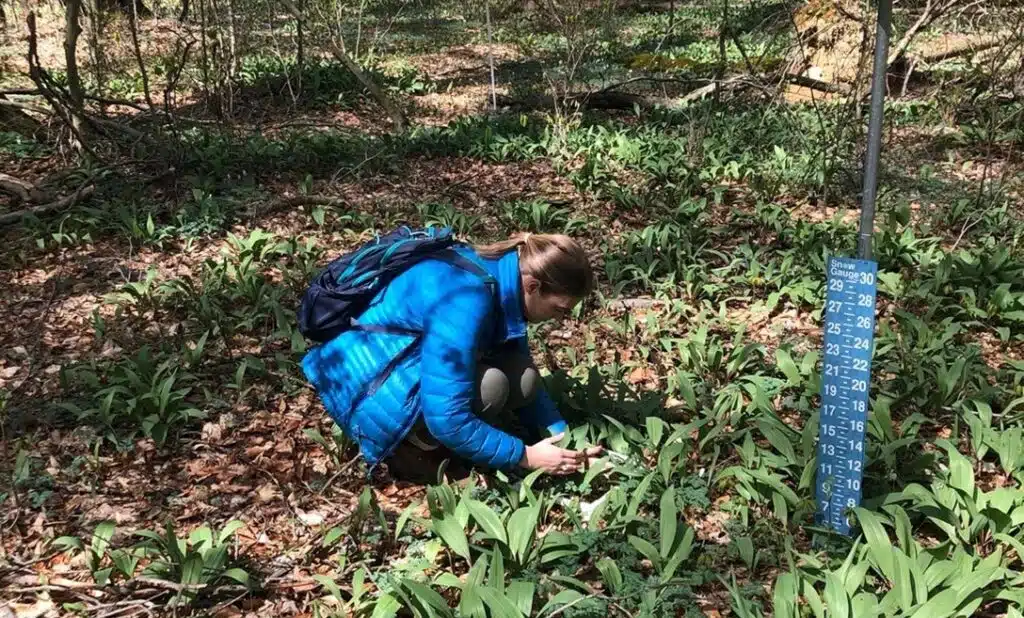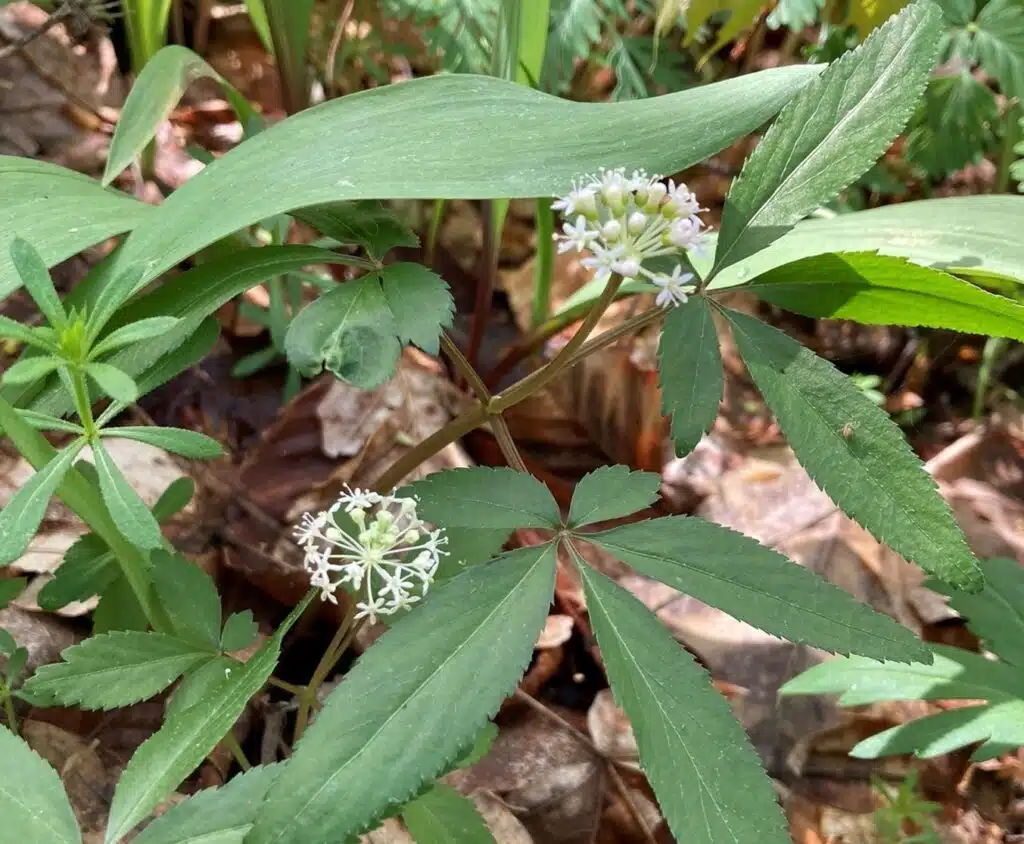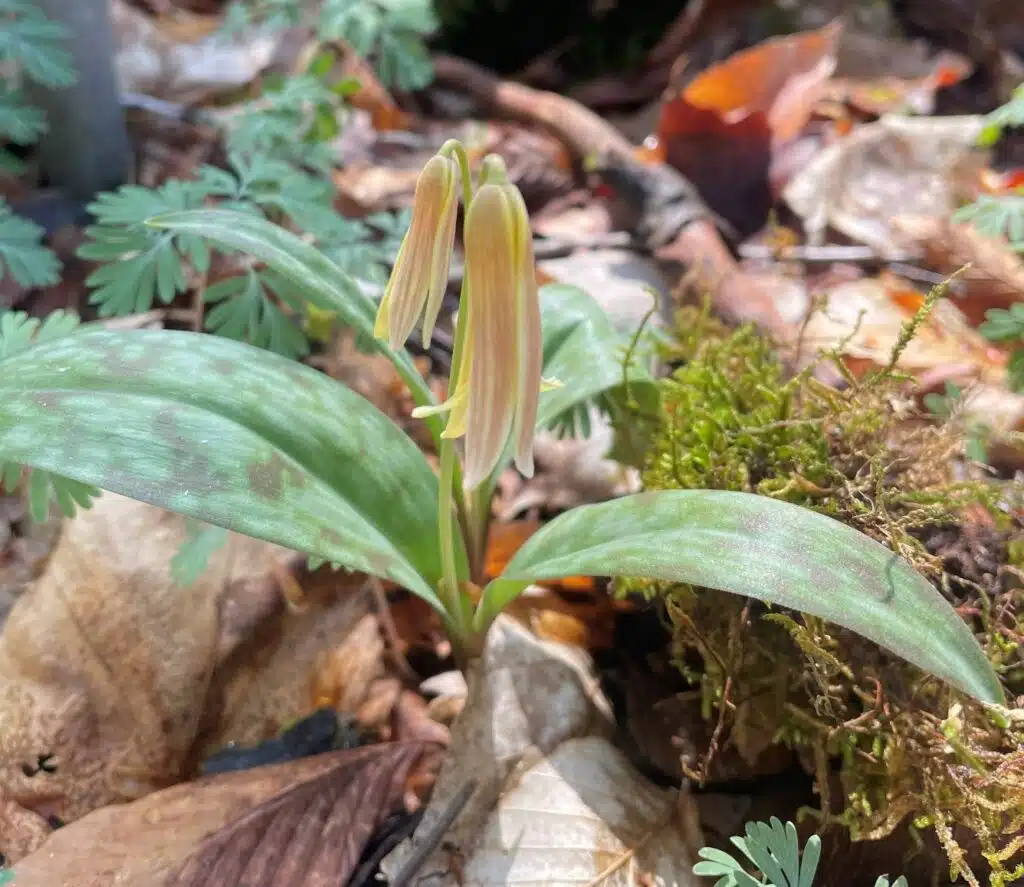
By Sarah Kyker, Lydia Jahn, and David Burke, Science & Conservation
If you see members of the soil ecology lab out in the arboretum’s natural areas, you will typically find us collecting soil cores or digging up roots. This is because we study fungi belowground. But, sometimes in the soil ecology lab, we take a look aboveground too! On Wednesday of this week, we did just that during our annual wildflower survey in Stebbins Gulch at our long-term research sites!

Including this year, we now have 17 years of wildflower data! One trend we have found with our years of plant survey data is that weather conditions in one year affected woodland wildflowers in the following year. If the spring months of one year had cooler temperatures and more precipitation, the following year’s wildflowers had higher plant cover. Want to go wildflower hunting in your own backyard, we have a guide for that!
Plant cover is a measurement that ecologists use to estimate plant abundance. What we do is set a frame made of PVC pipe on the ground and around whatever wildflowers are growing at our research plots. We then estimate what percentage of the ground within the frame is covered by each species of plant. The frame we use is always 0.6 m2 in area. This standardization allows us to compare plant abundance across different sites and between years.

The cluster flowers of dwarf ginseng (Panax trifolius). The dwarf ginseng plants are nestled among leaves of other wildflowers, including wild leek (Allium tricoccum), squirrel corn (Dicentra canadensis), and a plant species in the genus Galium.

The flower pictured here is great white trillium (Trillium grandiflorum). Also pictured are leaves of other wildflower species, including wild leek (Allium tricoccum), squirrel corn (Dicentra canadensis), and a plant species in the genus Galium.

The flower pictured here is squirrel corn (Dicentra canadensis). Also pictured are leaves of wild leek (Allium tricoccum).

The flower pictured here is Trout Lily (Erythronium americanum). Also pictured are leaves of squirrel corn (Dicentra canadensis).
It is interesting that weather conditions in one year can affect what we find in another year. Early spring wildflowers have a unique ability to grow and thrive in cool temperatures. These so-called spring ephemerals take advantage of the high light levels on the forest floor before the canopy trees leaf-out. But this means they are growing in the cooler temperatures of spring. Based on data from other scientists, we think that cooler, wetter spring weather conditions benefit the belowground storage organs (e.g., bulbs) of wildflowers. These bulbs and other storage organs over-winter and then yield the greater cover we measure in the following year.
Ultimately, we will relate the cover of the wildflowers aboveground with the taxa of fungi belowground. (We still have a few more years of soil samples to get through in the lab.) In the meantime, it was nice to spend the day quantifying native wildflowers and getting some great spring-time pictures along the way! We hope you enjoy learning with us!













